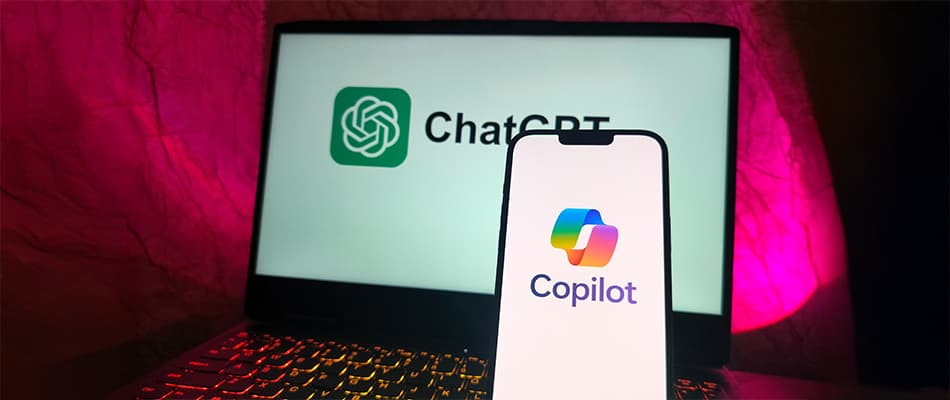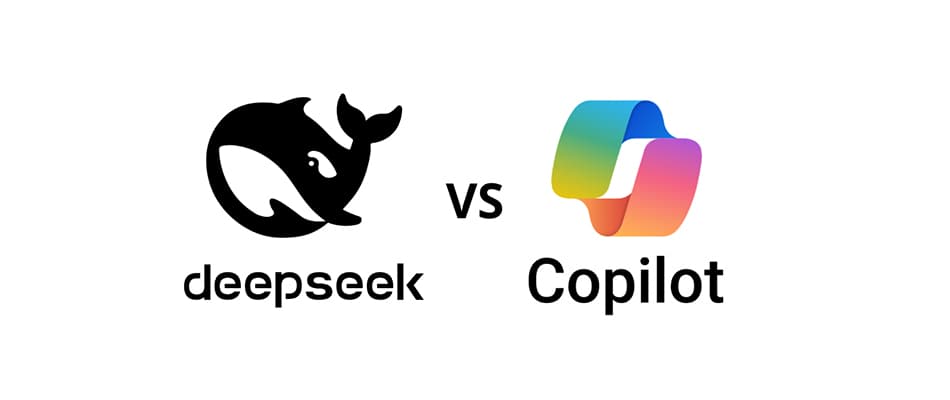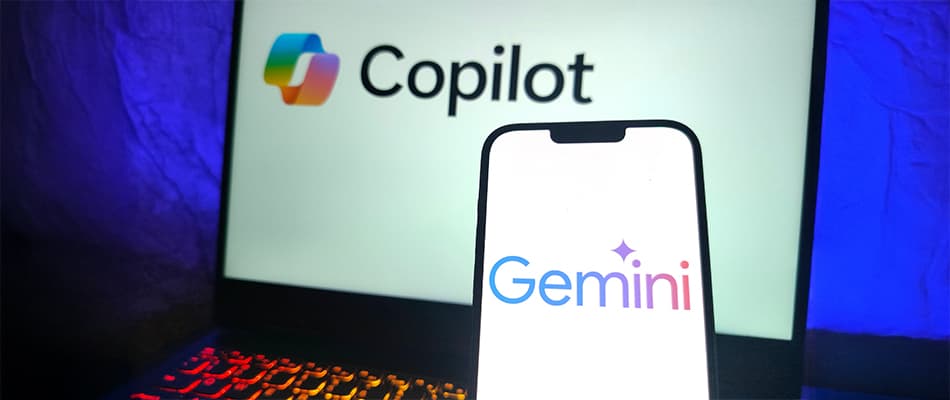Copilot vs ChatGPT – Which Tool is Better?
Artificial Intelligence is transforming the way we work, learn, and create. Two of the most talked-about AI tools today are Copilot and ChatGPT.
But which one is right for you? With the growing adoption of AI in industries such as software development, marketing, education, and research, understanding the strengths and differences of these tools is crucial.
Many professionals face the dilemma: Should I use Copilot to streamline coding, or ChatGPT to enhance creative and analytical tasks? The answer depends on your workflow, goals, and the tasks you tackle daily.
Choosing the right tool can significantly boost productivity, reduce errors, and free you to focus on high-value work.
In this article, we’ll explore the key differences, use cases, and best practices for Copilot and ChatGPT. You’ll also discover how to use them together effectively for a supercharged workflow.
By the end, you’ll have a clear roadmap for leveraging these AI tools in 2026 and beyond.
Understanding the Basics
Copilot is an AI-powered assistant primarily designed for coding and workflow automation. Integrated into IDEs like VS Code and GitHub, it helps developers write code more efficiently, debug effectively, and learn programming languages interactively.
It’s particularly valuable for tasks such as generating boilerplate code, automating repetitive scripts, and streamlining development workflows.
ChatGPT, on the other hand, is a conversational AI capable of generating text, answering questions, summarising information, and assisting in learning. It’s versatile, helping writers, students, marketers, and researchers by providing insights, explanations, and creative ideas.
Both tools are AI-driven, but their applications differ. Copilot excels in technical, coding-heavy tasks, while ChatGPT thrives in creative, analytical, and conversational workflows.
Read about ChatGPT Prompt Engineering for Developers.

Key Differences Between Copilot and ChatGPT
Here’s a snapshot of how these two AI powerhouses compare:
|
Feature |
Copilot |
ChatGPT |
|
Primary Function |
Coding assistant & workflow automation |
Conversational AI & content generation |
|
Ideal Users |
Developers, coders, technical teams |
Students, writers, and general users |
|
Integration |
IDEs like VS Code, GitHub |
Web, API, chat platforms |
|
Output Type |
Code snippets, suggestions, automation |
Text-based content, answers, explanations |
|
Strengths |
Speed, efficiency, context-aware coding |
Versatility, creativity, conversational reasoning |
|
Limitations |
Mostly coding-focused |
Limited IDE integration, less context for coding |
Interactive takeaway: Copilot is ideal for individuals who spend their days coding or managing technical projects, while ChatGPT is more suitable for tasks such as content creation, learning, or research.

Use Cases – When to Choose Copilot
Copilot is your go-to AI companion for coding and automation. It accelerates development by generating accurate code snippets, debugging errors, and streamlining repetitive tasks. Whether you’re learning new languages or managing complex workflows, Copilot enhances efficiency and helps you focus on innovation instead of syntax.
Here’s how to make the most of it:
- Generate code snippets and boilerplate code
- Debug and optimise scripts
- Automate repetitive workflows
- Accelerate learning for new programming languages
Pro Tips / Best Practices for Copilot:
- Provide detailed prompts to get accurate suggestions.
- Use Copilot to draft boilerplate code, but review the logic constantly before deployment.
- Experiment with multiple programming languages to expand your skillset.
- Pair with version control tools to safely manage code changes.
- Combine Copilot suggestions with human judgment to avoid errors.
Example: A web developer needed to implement authentication in a new app. Copilot suggested a complete function, saving hours of manual coding and allowing the developer to focus on UI design.
Discover information on – What is the Difference Between ChatGPT, Gemini and Claude?
Use Cases -When to Choose ChatGPT
ChatGPT is the ultimate AI assistant for creativity, learning, and communication. It helps generate engaging content, summarise complex ideas, and support research or brainstorming sessions. Whether you’re writing, studying, or strategising, ChatGPT enhances clarity and creativity across all types of professional and academic tasks.
Here’s how to use it effectively:
- Draft articles, emails, and social media posts
- Provide research summaries and explanations
- Tutor learners on technical or academic topics
- Generate ideas for projects or campaigns
Pro Tips / Best Practices for ChatGPT:
- Start with a clear question or outline to guide the response.
- Iterate outputs to refine tone, style, or detail.
- Combine AI-generated content with human editing for authenticity.
- Use it as a brainstorming partner to explore multiple perspectives.
- Experiment with prompts to get both concise and detailed responses.
Example: A marketing team needed content for multiple platforms. Using ChatGPT, they generated drafts for blogs, newsletters, and social media posts in under an hour while keeping a consistent brand voice.
Check out – What Type of AI is ChatGPT and Claude?

Can You Use Both Together?
Using Copilot and ChatGPT together creates a powerful workflow that blends creativity with execution. While ChatGPT helps you plan, explain, or ideate, Copilot turns those ideas into functional code. Together, they streamline development, learning, and problem-solving across both technical and creative tasks.
Here’s how to combine them effectively:
- Brainstorm with ChatGPT: Start by leveraging ChatGPT to generate ideas, outline content, or explain complex concepts.
- Implement with Copilot: Utilise Copilot to bring your ideas or plans to life by writing code, automating tasks, or managing technical implementations.
- Iterate seamlessly: Switch between ChatGPT for explanations or creative inputs and Copilot for execution, creating a dynamic workflow.
Example:
A data analyst wanted to create a data-driven website:
- ChatGPT helped structure content and provided explanations of analytics concepts.
- Copilot implemented the backend code and automated data pipelines.
- Together, the workflow saved time, reduced errors, and produced a fully functional project efficiently.
Pro Tips for Using Both Together:
- Clearly define roles for each tool: ChatGPT for ideation, Copilot for execution.
- Utilise ChatGPT to craft prompts for Copilot, resulting in more accurate coding outputs.
- Review outputs from both tools to ensure alignment with your project goals.
- Maintain iterative cycles: generate, implement, review, and improve.
- Use this combination to learn faster by seeing explanations from ChatGPT and coding execution from Copilot simultaneously.

Conclusion
Copilot and ChatGPT are complementary AI tools, each excelling in different scenarios. Copilot is ideal for coding, automation, and technical learning, while ChatGPT shines in content creation, research, and conversational tasks. Using both together can maximise productivity, creativity, and learning.
As AI adoption continues to grow in 2026, professionals who master these tools will have a significant advantage. For structured, hands-on learning, the Digital Regenesys Artificial Intelligence Certificate Course provides practical guidance, enabling learners to effectively utilise AI tools like Copilot and ChatGPT.
Visit Digital Regenesys to learn more about mastering AI tools like Copilot and ChatGPT and enhance your skills.
FAQs
What is the main difference between Copilot and ChatGPT?
Copilot focuses on coding and workflow automation, while ChatGPT handles conversational, creative, and research tasks.
Which tool is better for beginners in coding?
Copilot provides real-time suggestions, examples, and code completions, making it ideal for beginners.
Can ChatGPT generate code like Copilot?
Yes, but ChatGPT lacks the IDE integration and coding context that Copilot offers.
Can Copilot help with non-technical tasks?
Copilot can automate routine coding workflows, but ChatGPT is better suited for general non-technical assistance.
Is it beneficial to use both tools together?
Yes! ChatGPT for ideation and Copilot for execution create a highly efficient workflow.
How can I get started professionally with these tools?
Sign up for both, integrate them into your workflow, and consider the Digital Regenesys AI Certificate Course for structured learning.











